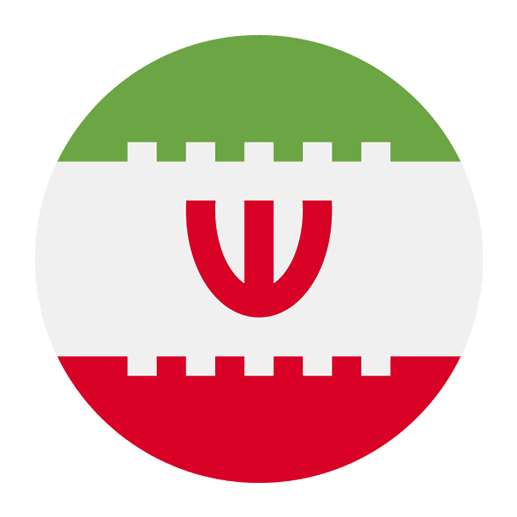Persian, also known as Farsi, is a rich and ancient language spoken primarily in Iran, Afghanistan (where it is called Dari), and Tajikistan (where it is called Tajik). Its morphology, or the study of word formation and structure, offers fascinating insights for language learners. Persian morphology is relatively straightforward compared to many other languages, yet it possesses unique characteristics that make it distinct and intriguing. This article delves into the morphology of Persian, exploring how words are formed and modified in this Indo-Iranian language.
Roots and Affixes
At the heart of Persian word formation are roots and affixes. Roots are the core components that carry the primary meaning of a word, while affixes are prefixes, suffixes, or infixes that attach to the roots to modify their meanings or grammatical functions.
Roots
The root of a word in Persian is typically a sequence of consonants that convey a basic meaning. For example, the root “k-t-b” (کتب) relates to writing. From this root, you can derive various words by adding different affixes:
– کتاب (ketâb) – book
– کاتب (kâtab) – writer
– مکتوب (maktub) – written
The root provides a semantic field, and the affixes work within this field to create related words.
Prefixes
Prefixes in Persian are less common than suffixes but are still an important aspect of word formation. They attach to the beginning of roots to alter their meanings:
– نا (nâ-) – a common prefix that denotes negation or absence. For example:
– ناتوان (nâtavân) – unable (توانا – tavânâ means able)
– نادرست (nâdorost) – incorrect (درست – dorost means correct)
Suffixes
Suffixes are more frequently used in Persian and can denote a variety of grammatical categories, including tense, aspect, mood, number, and case. Some common suffixes include:
– ی (i) – This suffix is used to form adjectives from nouns:
– ملی (melli) – national (ملت – mellat means nation)
– فرهنگی (farhangi) – cultural (فرهنگ – farhang means culture)
– ها (hâ) – This pluralizes nouns:
– کتابها (ketâb-hâ) – books
– دوستها (dust-hâ) – friends
Inflectional Morphology
Inflectional morphology in Persian involves the modification of words to express grammatical relationships without changing the word’s core meaning. This includes changes in tense, mood, aspect, number, and case.
Verbal Inflections
Verbs in Persian are inflected to indicate tense, mood, and aspect. The basic form of a verb is called the infinitive, which typically ends in -ن (an). For example, خوردن (khordan) means “to eat.” To form different tenses, various prefixes and suffixes are added:
– Present Simple: The present stem is used with personal endings:
– من میخورم (man mikhoram) – I eat
– تو میخوری (to mikhor-i) – You eat
– Past Simple: The past stem is used with personal endings:
– من خوردم (man khordam) – I ate
– تو خوردی (to khord-i) – You ate
– Future Simple: The future tense is formed using the present stem of the verb “خواستن” (khâstan) meaning “to want” followed by the infinitive:
– من خواهم خورد (man khâham khord) – I will eat
– تو خواهی خورد (to khâhi khord) – You will eat
Noun Inflections
Nouns in Persian are inflected for number and sometimes for case, although Persian lacks the extensive case system found in many other languages. The primary inflectional changes for nouns are:
– Pluralization: As mentioned earlier, adding -ها (-hâ) to a noun pluralizes it. There are also irregular plurals formed with the suffix -ات (-ât):
– کتاب (ketâb) – book / کتابها (ketâb-hâ) – books
– دختر (dokhtar) – girl / دختران (dokhtarân) – girls
– Ezâfe: Persian uses a construction called ezâfe (اضافه) to link nouns together, often indicating possession. It is represented by the suffix -e or -ye (after vowels):
– کتابِ علی (ketâb-e Ali) – Ali’s book
– خانهی زیبا (khâne-ye zibâ) – beautiful house
Derivational Morphology
Derivational morphology in Persian involves creating new words by adding affixes to existing roots. This process can significantly alter the meaning of the original word.
Nominal Derivation
Nouns can be derived from other nouns, adjectives, or verbs by adding specific affixes:
– The suffix -ان (-ân) can be added to a noun to form a profession or habitual action:
– باغبان (bâghbân) – gardener (باغ – bâgh means garden)
– نویسنده (nevisande) – writer (نوشتن – neveshtan means to write)
– The suffix -ی (-i) can be added to adjectives to form abstract nouns:
– زیبایی (zibâyi) – beauty (زیبا – zibâ means beautiful)
– دوستی (dusti) – friendship (دوست – dust means friend)
Adjectival Derivation
Adjectives can be derived from nouns and verbs using various affixes:
– The suffix -ی (-i) can be added to nouns to form adjectives:
– ملی (melli) – national (ملت – mellat means nation)
– فرهنگی (farhangi) – cultural (فرهنگ – farhang means culture)
– The suffix -انه (-âne) can be added to nouns to form adjectives with the meaning “related to” or “characteristic of”:
– کودکانه (kudakâne) – childish (کودک – kudak means child)
– دوستانه (dustâne) – friendly (دوست – dust means friend)
Verbal Derivation
New verbs can be formed from nouns or adjectives by adding specific prefixes or suffixes:
– The prefix ب (be-) or می (mi-) can be added to form verbs from nouns:
– بگو (begu) – tell (from گفتن – goftan)
– میآور (miâvar) – bring (from آوردن – âvardan)
Compounding
Compounding is another common method of word formation in Persian. It involves combining two or more words to create a new word with a specific meaning.
Noun-Noun Compounds
Two nouns can be combined to form a compound noun:
– دانشجو (dâneshju) – student (دانش – dânesh means knowledge + جو – ju means seeker)
– کتابخانه (ketâbkhâne) – library (کتاب – ketâb means book + خانه – khâne means house)
Adjective-Noun Compounds
An adjective and a noun can be combined to create a new compound noun:
– سفیدبرف (sefidbarf) – snow (سفید – sefid means white + برف – barf means snow)
– خوشاخلاق (khosh-akhlâq) – good-natured (خوش – khosh means good + اخلاق – akhlâq means manners)
Verb-Noun Compounds
A verb and a noun can form a compound that expresses a specific action or concept:
– دستشستن (dast-shostan) – to wash hands (دست – dast means hand + شستن – shostan means to wash)
– کارکردن (kâr-kardan) – to work (کار – kâr means work + کردن – kardan means to do)
Reduplication
Reduplication is a process in Persian where a word or part of a word is repeated to create a new word with an intensified or altered meaning. This is often used in colloquial speech:
– کمکم (kam-kam) – little by little (کم – kam means little)
– تندتند (tond-tond) – quickly (تند – tond means fast)
Loanwords and Adaptation
Persian has borrowed extensively from other languages, particularly Arabic, French, and English. These loanwords are often adapted to fit Persian phonological and morphological rules:
– تلویزیون (televizyon) – television (from French “télévision”)
– کامپیوتر (kâmpiyuter) – computer (from English “computer”)
Loanwords are often modified to fit Persian phonetic patterns, making them more accessible to native speakers.
Conclusion
Understanding Persian morphology is essential for mastering the language. By grasping how roots and affixes work, how words are inflected and derived, and the processes of compounding and reduplication, learners can build a solid foundation for reading, writing, and speaking Persian. The logical and relatively straightforward nature of Persian morphology makes it an accessible and rewarding language to learn.
Whether you are a beginner or an advanced student, delving into the intricacies of Persian word formation will enhance your appreciation of this beautiful and historically rich language. By studying its morphology, you not only improve your linguistic skills but also gain insights into the culture and history of the Persian-speaking world.

